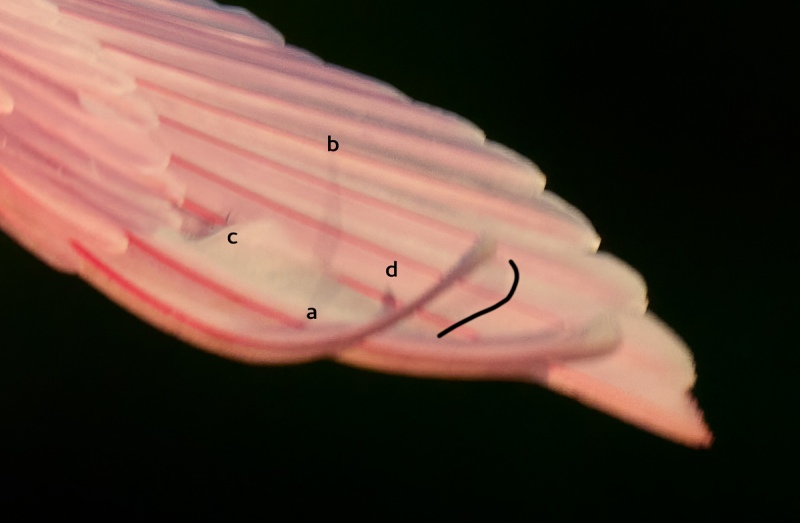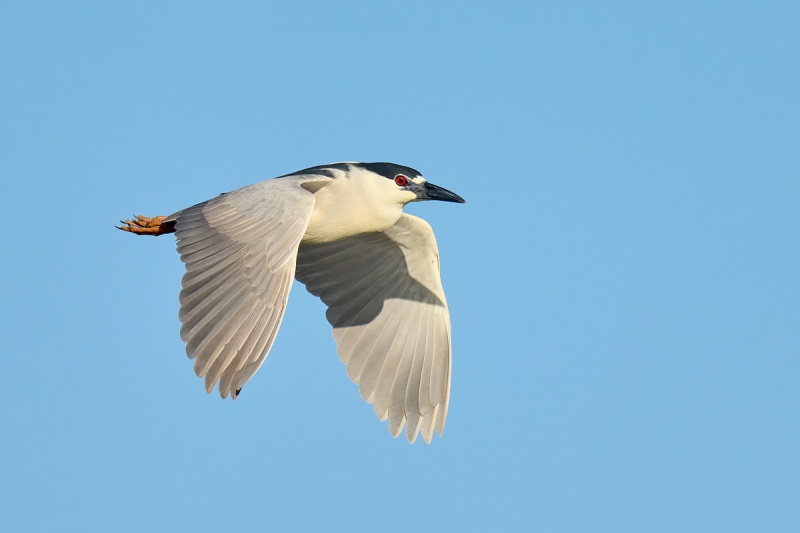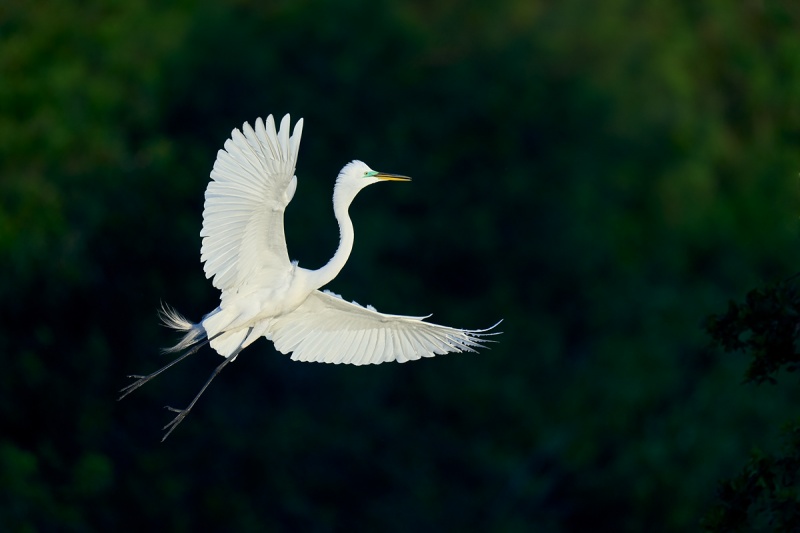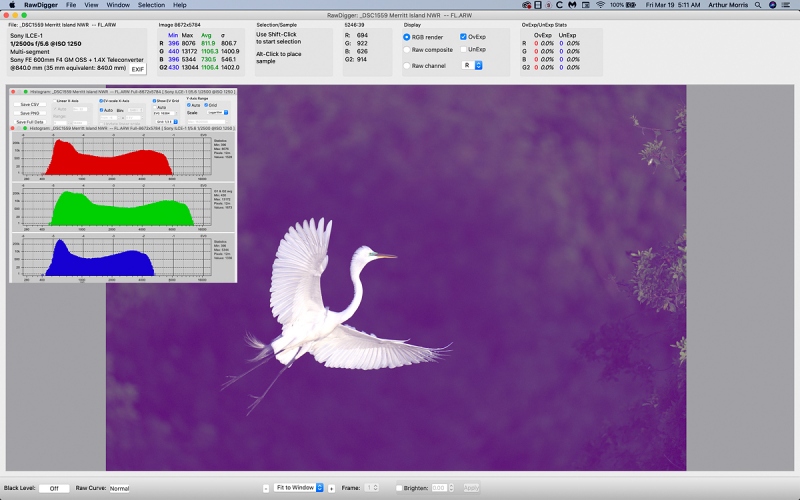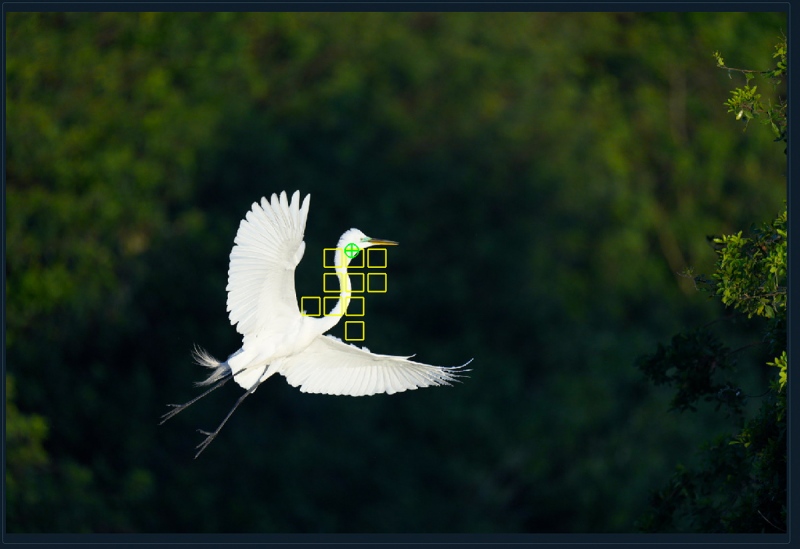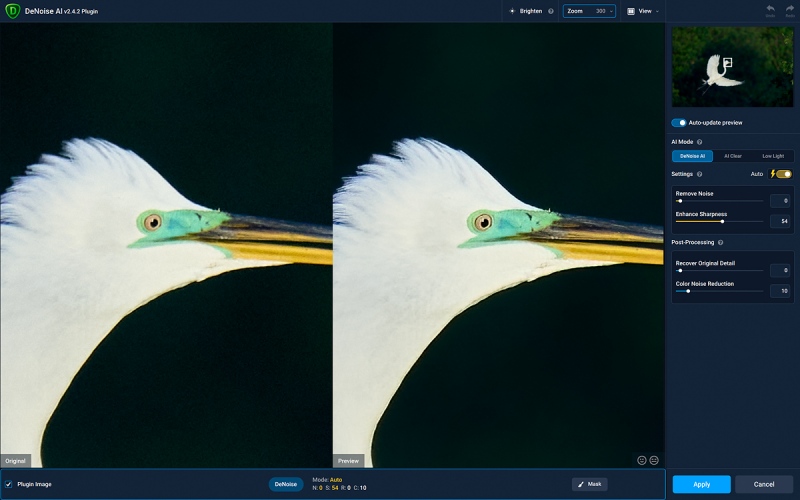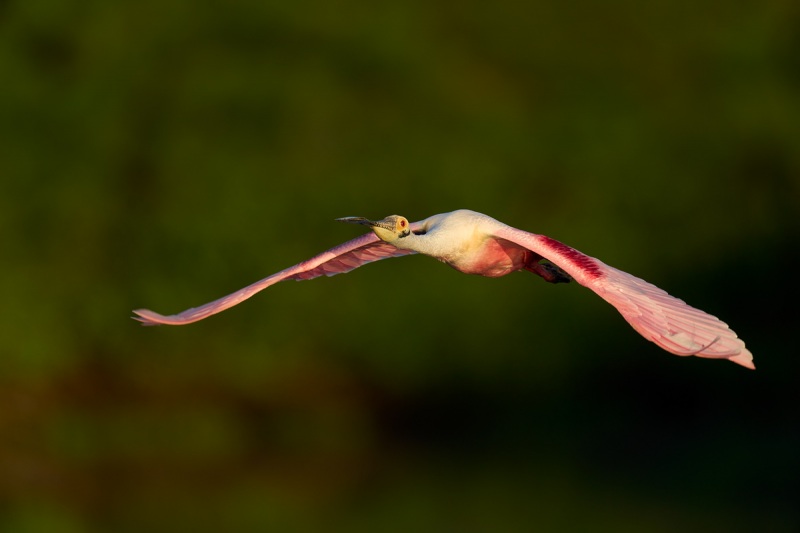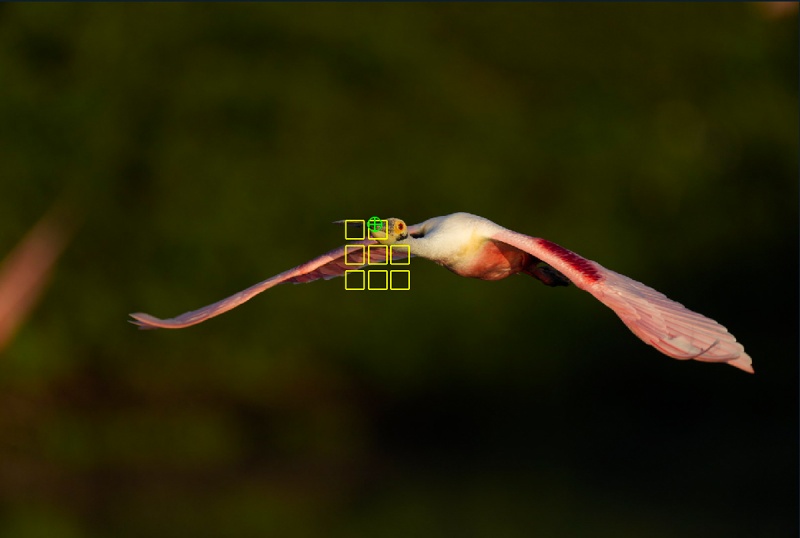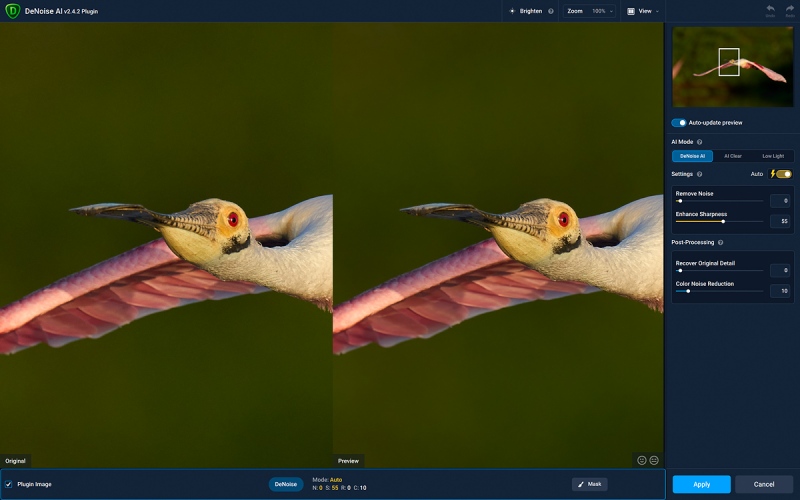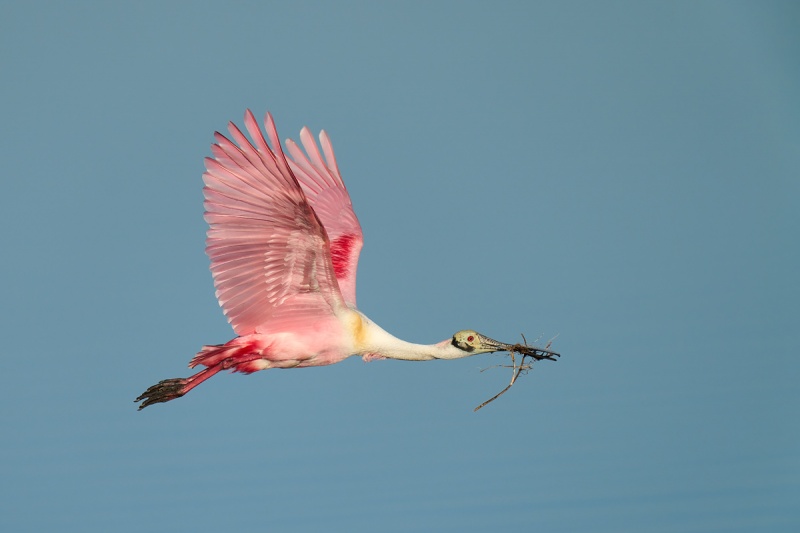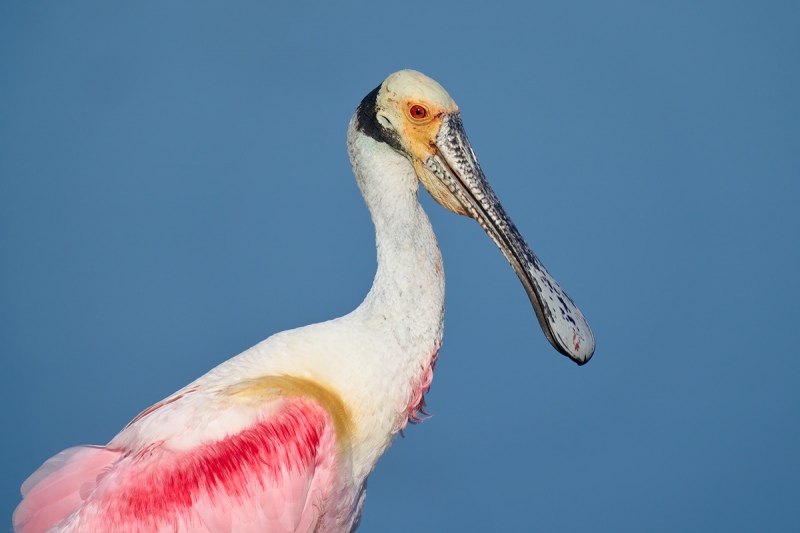March 20th, 2021 What’s Up?
Bill and I had maybe the worst morning ever at Merritt Island NWR. Sunrise was a dud. After that, the clear skies and wind against sun conditions were bad as expected. We did have a few good chances, but each of the birds flew away. 🙁 We reviewed many hundreds of Bill’s images during our midday break. I will be sharing three very fine ones with you here soon.
We dined early on Friday afternoon on yet more large lightly breaded and fried shrimps at Dixie Crossroads Restaurant. Then we paid one last visit to Blackpoint Wildlife Drive and with a cold, stiff, northwest wind right in our faces, we did better than expected. We had some fine Blue-winged Teal in still blue water (including some after-bath flapping) along with several dancing (but somewhat distant) Reddish Egrets and a fairly cooperative Green Heron. I called Bill over to the Green Heron and left. And then the bird caught a frog! Lucky Bill.
Today is Saturday 20 March 2021. The forecast for Stick Marsh is for clear skies with gentle northwest winds. We will surely see and photograph some handsome Roseate Spoonbills, but that is not the weather you dream of for morning bird photography …
I am headed home today and plan on finally finishing the BAA Canon EOS R5 Camera User’s e-Guide on Sunday and Monday.
Wherever you are and whatever you are doing, I hope that you have a great day.
This blog post took about two hours to prepare and makes eighty-eight days in a row with a new one. Please remember to use my B&H affiliate links or to save money at Bedfords by using the BIRDSASART discount code at checkout.
The Stick Marsh Site Guide Subscription Service
Th Site Guide Subscription Service is a new concept. I will send a short site guide no later than this coming Monday that covers the basics. It will include a map of the rookery area with specific instructions and wind and weather advice. There were some good photographers at Stick Marsh yesterday. Many are skilled at hand-holding 500 and 600mm f/4 telephotos lenses. But with all due respect, none of them can come anywhere near me when it comes to analyzing the photo opps at a given location. With the exception of the aforementioned Fred — I think his full name was Fred Vaughn, every photographer got to their favorite spot and never moved. We moved around a lot and had great and different chances all day long. After each visit, you will receive an e-mail noting the best locations and anything new that I learned.
To sign up for the Stick Marsh Site Guide Subscription Service, send a PayPal for $100.00 to us at birdsasart@verizon.net and be sure to include the words Stick Marsh. Or, you can call Jim any day at 1-863-692-0906 to pay by credit card. At some point, we will get this item in the BAA Online Store.
I fully understand that you can go to Google Maps, find the Stick Marsh, visit, and likely make some good or great images. You might think, I can do fine just without artie’s advice. But you would do a whole lot better with it.
Please contact me via e-mail to explore the possibilities of morning In-the-Field Instructional Sessions at Stick Marsh.
Please Remember
With income from IPTs now at zero, please, if you enjoy and learn from the blog, remember to use one of my two affiliate programs when purchasing new gear. Doing so just might make it possible for me to avoid having to try to get a job as a Walmart greeter and will not cost you a single penny more. And if you use Bedfords and remember to enter the BIRDSASART code at checkout, you will save 3% on every order and enjoy free second-day air shipping. In these crazy times — I am out at least forty to sixty thousand dollars so far due to COVID 19 (with lots more to come) — remembering to use my B&H link or to shop at Bedfords will help me out a ton and be greatly appreciated. Overseas folks who cannot order from the US because of import fees, duties, and taxes, are invited to help out by clicking here to leave a blog thank you gift if they see fit.
Wanted to Buy
If you have a Canon EF Extender 2X III (teleconverter) that you would like to part with, please contact me via e-mail. I have an interested buyer.
New and Better Bedfords Discount Policy!
You can now save 3% on all of your Bedfords photo gear purchases by entering the BIRDSASART coupon code at checkout. Your discount will be applied to your pre-tax total. In addition, by using the code you will get 2nd day air shipping via Fed Ex.
Grab a Nikon AF-S Teleconverter TC-14E III and save $14.99. Purchase a Canon EOS R5 and your discount will be $116.97. Purchase a Sony FE 600mm f/4 GM OSS lens and save a remarkable $389.94! Your Bedford’s purchase no longer needs to be greater than $1,000.00 for you to receive a discount. The more you spend, the more you save.
Money Saving Reminder
Many have learned that if you need a hot photo item that is out of stock at B&H and would enjoy free second-day air shipping, your best bet is to click here, place an order with Bedfords, and enter the coupon code BIRDSASART at checkout. If an item is out of stock, contact Steve Elkins via e-mail or on his cell phone at (479) 381-2592 (Central time). Be sure to mention the BIRDSASART coupon code and use it for your online order to save 3% and enjoy free 2nd-day air shipping. Steve has been great at getting folks the hot items that are out of stock at B&H and everywhere else. The wait lists at the big stores can be a year or longer for the hard to get items. Steve will surely get you your gear long before that. For the past year, he has been helping BAA Blog folks get their hands on items like the SONY a9 ii, the SONY 200-600 G OSS lens, the Canon EOS R5, the Canon RF 100-500mm lens, and the Nikon 500mm PF. Steve is personable, helpful, and eager to please.


Gear Questions and Advice
Too many folks attending BAA IPTs (remember those?) and dozens of photographers whom I see in the field and on BPN, are–out of ignorance–using the wrong gear especially when it comes to tripods and more especially, tripod heads… Please know that I am always glad to answer your gear questions via e-mail. Those questions might deal with systems, camera bodies, accessories, and/or lens choices and decisions.
|
|
The Roseate Spoonbill wing-tip
|
What I Did Not Mind
I did not mind the following:
The dark “dot” on the highlighted edge of the bill …
The long, vertical shadow above the bird’s right wing tip …
The rectangle of orange/brown colour at the bottom left of the image, under the bird’s right wing …
The hidden feet.
The Black background in the lower right corner of image.
The mysterious looking face in the background on the lower left side/corner area.
The shadow of the head against leading edge of the right wing.
The orange (branch?) poking in on the left side.
That the far wing tip is blurred slightly
That the primaries of the near wing are curled up a little …
And I was not hoping to get more color on the top of the far-wing.
In fact, not only did none of the above bug me; I never noticed a single one of them. In addition, I consider the curled primaries on the near wing a plus.
Oh, and yes, this image was my favorite of the three featured in the blog recent post here because of the sharpness, the sweet light, and the very sweet background.
What Did Bug Me
As noted by Bob Eastman, the first to leave a comment:
I did mind the long, small shadow of the curled (first) primary on the near wingtip. In the screen capture above, it is the shadow that runs from a to b. I originally thought that it was a piece of dried grass or debris.
It is amazing what you can see by taking a closer look:
The dark spot and shadow above and to the left of letter c were likely the result of a single disturbed feather.
I am not sure what the dark smudge below the letter d is …
Lastly, there is a faint shadow just to the left of the curved line, perhaps from the up-curved second primary.
As Cliff Beittel and others suggested, any or all of the above could easily be repaired in Photoshop.
|
|
|
This image was created on 17 March 2021 at the Stick Marsh in Fellsmere, FL. Once again, I used the Induro GIT 404L/Levered-clamp FlexShooter Pro-mounted Sony FE 600mm f/4 GM OSS lens with the Sony FE 1.4x Teleconverter and The One, the Sony Alpha 1 Mirrorless digital camera. ISO 500. Exposure was determined by Zebras with ISO on the thumb dial: 1/4000 sec. at f/5.6 (wide open) in Manual mode. RawDigger showed the raw file to be 2/3 stop under-exposed. AWB at 9:06am on a clear morning.
Wide/AF-C was active at the moment of exposure and performed perfectly. Click on the image to see a larger version.
Black-crowned Night-Heron adult in flight
|
Why Under-exposed?
Working in Manual Mode with Birds of Different Tonalities
I was set up for the brilliant white Great Egrets in flight. From those settings, I opened up 1/3 stop for the spoonbills (when I’d see them coming) as their WHITEs are less bright than whites on Great Egret. For this night-heron, I should have opened up two clicks (2/3-stop) because their WHITEs are not as bright as the WHITEs on the spoonies.
When this bird flew by unexpectedly, I was set up for the super-bright Great Egrets and did not have time to change the exposure. Thus, I wound up 2/3-stop too dark. If I see an Anhinga coming, I’ll raise the ISO 2 clicks. If I want to try for an all-black Fish Crow, I’d go with five or six more clicks of ISO.
Note: You can change the exposure with either the ISO or the shutter speed (in response to the tonality of the subject). Notice that I set the aperture to the wide open value to ensure a fast shutter speed. With almost all birds in flight, it is a waste to stop down “for extra depth of field” as enough depth of field to cover the bird is provided by the distance to the subject.
Sony Alpha a1 Image Quality
The night-heron image above represents only about 25% of the original pixels, what I would call a 75% crop. Nonetheless, the image quality of the master TIF file is superb.
Typos
With all blog posts, feel free to e-mail or to leave a comment regarding any typos or errors.
March 19th, 2021 What’s Up?
After a somewhat blah sunrise on Thursday, the last morning of the Merritt Island IPT, we were looking at getting back very early. The only thing that can save us, I said, is a feeding spree near the tour road with the birds on our left and the sun on our right. Donna and Bev wanted to get back early to check out of their AirBnB and begin their 2-day drive back to Chattanooga. We stopped briefly at a small pond for some Black-necked Stilts and an unusually tame breeding plumage Glossy Ibis. A drop-dead gorgeous Reddish Egret flew in to tussle with a less handsome reddish but quickly flew off.
I looked down the road to our right and saw several parked vehicles and some flashes of white. We are outta here now! A short drive brought us to a huge feeding spree right next to the tour road with the birds on our left and the sun on our right. More than 100 Snowy Egrets and several other species were fishing and dip-feeding in a pond that was about 30 X 40 feet. A six foot American Alligator paddled around the pound making half-hearted lunges at a few birds. We were rooting hard for him to get breakfast but the gator was an abject failure as a hunter.
You will learn more about this incredibly difficult situation and the amazing end to the story in a future blog post.
Good friend Bill Schneider arrived at about 3pm for two days of SONY a1 Set-up and In-the Field Instruction. After we went through the menus and set up his camera, he practiced with it a bit by taking a few snaps around the yard. We headed to the refuge at about 3:30pm. It was partly sunny with a strong south wind. I did not expect to find much. We came around a curve near Sign 3 when I spotted what I thought was Snowy Egret taking shelter from the wing behind a mangrove. I almost did not stop but something did not look right. A second glance revealed that it was the odd heron/egret that has been visiting the refuge each spring for about five years. We stayed with the bird for close to an hour and had some great chances with a very strange and very beautiful bird.
After leaving the bird, again sheltered by a mangrove, Bill said, I want a nice spoonbill. We quickly found one feeding in small bay next to the road and stayed with it for about 30 minutes. We headed home, downloaded and looked at our images, and headed late for another great dinner at Dixie Crossroads Restaurant in Titusville. If you are not in the restaurant at 8:00pm sharp they send you home. Please do not ask me how fast I was driving up US Route 1. But we made it. 🙂
Today is Friday March 19 2021. The forecast for today is for mostly sunny with north/northwest winds all day. That is bad for morning bird photography. We will be headed out at 6:30 in hopes of a decent sunrise.
Wherever you are and whatever you are doing, I hope that you have a great day.
This blog post took about two hours to prepare and makes eighty-seven days in a row with a new one. Please remember to use my B&H affiliate links or to save money at Bedfords by using the BIRDSASART discount code at checkout.
Please Remember
With income from IPTs now at zero, please, if you enjoy and learn from the blog, remember to use one of my two affiliate programs when purchasing new gear. Doing so just might make it possible for me to avoid having to try to get a job as a Walmart greeter and will not cost you a single penny more. And if you use Bedfords and remember to enter the BIRDSASART code at checkout, you will save 3% on every order and enjoy free second-day air shipping. In these crazy times — I am out at least forty to sixty thousand dollars so far due to COVID 19 (with lots more to come) — remembering to use my B&H link or to shop at Bedfords will help me out a ton and be greatly appreciated. Overseas folks who cannot order from the US because of import fees, duties, and taxes, are invited to help out by clicking here to leave a blog thank you gift if they see fit.
Wanted to Buy
If you have a Canon EF Extender 2X III (teleconverter) that you would like to part with, please contact me via e-mail. I have an interested buyer.
New and Better Bedfords Discount Policy!
You can now save 3% on all of your Bedfords photo gear purchases by entering the BIRDSASART coupon code at checkout. Your discount will be applied to your pre-tax total. In addition, by using the code you will get 2nd day air shipping via Fed Ex.
Grab a Nikon AF-S Teleconverter TC-14E III and save $14.99. Purchase a Canon EOS R5 and your discount will be $116.97. Purchase a Sony FE 600mm f/4 GM OSS lens and save a remarkable $389.94! Your Bedford’s purchase no longer needs to be greater than $1,000.00 for you to receive a discount. The more you spend, the more you save.
Money Saving Reminder
Many have learned that if you need a hot photo item that is out of stock at B&H and would enjoy free second-day air shipping, your best bet is to click here, place an order with Bedfords, and enter the coupon code BIRDSASART at checkout. If an item is out of stock, contact Steve Elkins via e-mail or on his cell phone at (479) 381-2592 (Central time). Be sure to mention the BIRDSASART coupon code and use it for your online order to save 3% and enjoy free 2nd-day air shipping. Steve has been great at getting folks the hot items that are out of stock at B&H and everywhere else. The wait lists at the big stores can be a year or longer for the hard to get items. Steve will surely get you your gear long before that. For the past year, he has been helping BAA Blog folks get their hands on items like the SONY a9 ii, the SONY 200-600 G OSS lens, the Canon EOS R5, the Canon RF 100-500mm lens, and the Nikon 500mm PF. Steve is personable, helpful, and eager to please.


Gear Questions and Advice
Too many folks attending BAA IPTs (remember those?) and dozens of photographers whom I see in the field and on BPN, are–out of ignorance–using the wrong gear especially when it comes to tripods and more especially, tripod heads… Please know that I am always glad to answer your gear questions via e-mail. Those questions might deal with systems, camera bodies, accessories, and/or lens choices and decisions.
The Stick Marsh Site Guide Subscription Service
Th Site Guide Subscription Service is a new concept. I will send a short site guide no later than this coming Monday that covers the basics. It will include a map of the rookery area with specific instructions and wind and weather advice. There were some good photographers at Stick Marsh yesterday. Many are skilled at hand-holding 500 and 600mm f/4 telephotos lenses. But with all due respect, none of them can come anywhere near me when it comes to analyzing the photo opps at a given location. With the exception of the aforementioned Fred — I think his full name was Fred Vaughn, every photographer got to their favor spot and never moved. We moved around a lot and had great and different chances all day long. After each visit, you will receive an e-mail noting the best locations and anything knew that I learned.
To sign up for the Stick Marsh Site Guide Subscription Service, send a PayPal for $100.00 to us at birdsasart@verizon.net and be sure to include the words Stick Marsh. Or, you can call Jim any day at 1-863-692-0906 to pay by credit card. At some point, we will get this item in the BAA Online Store.
I fully understand that you can go to Google Maps, find the Stick Marsh, visit, and likely make some good or great images. You might think, I can do fine just without artie’s advice. But you would do a whole lot better with it.
Please contact me via e-mail to explore the possibilities of morning In-the-Field Instructional Sessions at Stick Marsh.
A Perfect Storm of Perfection
Everything came together for the creation of this image. We arrived at Stick Marsh early and got into perfect position. The light was gorgeous. I had noted the flight pattern of this particular bird returning to its nest and alerted the group. (Donna Bourdon got a very similar image.) I had checked the exposure, and the Sony Alpha a1 AF system performed to perfection. This was my favorite image from the IPT Stick Marsh visit. I will share my favorite spoonbill image and reveal the tiny flaw in that image in tomorrow’s blog post.
Some might say that the head angle in today’s “perfect” image is poor as the bird is looking away. They might be right, but without that very head angle I would likely not have gotten the wings-fully spread angel pose … In that situation, I could not have done any better.
|
|
|
Click on the screen Capture to see a larger version.
Image #1A: Raw Digger screen capture for the Great Egret breeding plumage spotlit angel pose image
|
The RawDigger (pink) Adapted Histogram
The Adapted Histogram here shows an absolutely perfect exposure with zero OvExp pixels and the GREEN histogram 2/3 of the way from the 8000 line to the 16000 line.
In the RawDigger e-Guide, you will learn exactly how to set up the Adapted “pink” RawDigger Histogram and how to use it to quickly and easily evaluate the exposure or raw file brightness of images from all digital cameras currently in use. RawDigger has been especially helpful to me as I have struggled with R5 exposures and learned my new camera body, the Sony Alpha a1.
|
|
|
Click on the screen Capture to see a larger version.
Image #1B: Active AF points for the Great Egret breeding plumage spotlit angel pose image
|
Sony Alpha a1 Astounds
To learn exactly how I set up my Alpha a1 for flight to achieve results like this, join the SONY Alpha a1 Set-up and Info Group.
SONY Alpha a1 Set-up and Info Group
The SONY Alpha a1 Set-up and Info Group is going great guns as folks chime in with thoughtful questions and experience-based answers. I learned a ton recently in group e-mail exchanges with Geoff Newhouse, Craig Elson and James Spillman. Like the R5, the a1 is an incredibly complex camera body. But the sad news is that if you are doing bird photography right now the Alpha a1 pretty much obliterates the competition with 51,000,000 gorgeous pixels and a science-fiction-like AF systsem …
All who purchase their Alpha a1 bodies via a BAA affiliate link receive a free subscription to the Sony Alpha a1 Set-Up and Info Updates group. This same service may be purchased by anyone with an a1 body via a $150.00 Paypal sent to birdsasart@verizon.net indicating payment for Alpha a1 Info Updates. New members will receive all back issues.
|
|
|
Click on the screen Capture to see a larger version.
Image #1C: Topaz DeNoise AI the Great Egret breeding plumage spotlit angel pose image
|
Topaz DeNoise AI
There was quite a bit of noise in the dark tones. Why? Because when we properly expose for the WHITEs, the dark tones are approximately 1 2/3 stops under-exposed. Click on the image to see how beautifully Topaz DeNoise AI on Auto cleaned up the background noise and sharpened an already sharp image beautifully and non-destructively. Confused? Read and study the section on Exposure Theory in the original soft cover The Art of Bird Photography.
Great Topaz News!
Folks who use the BAA Topaz link to purchase Sharpen AI, DeNoise AI, or the Utility Bundle (or any other Topaz plug-ins), will receive a 15% discount by entering the ARTHUR15 code at checkout. If the stuff is on sale (as it usually is), you save 15% off of the sale price! To get the discount you must use my link and you must enter the discount code. Be sure to start with this link.
Those who purchase Sharpen AI, DeNoise AI, or any other Topaz plug-ins using my link and then entering the ARTHUR15 code at checkout can e-mail to request a short Getting Started with Topaz e-Guide. Please include a copy of your Topaz receipt that shows the discount. Aside from the basics, the guide explains how to install the plug-ins so that they appear in the Photoshop Filter Menu.
Typos
With all blog posts, feel free to e-mail or to leave a comment regarding any typos or errors.
March 18th, 2021 This Just In!
I am hitting publish on this blog post at an unusually late 1:18pm. We had yet about great morning so I have been very busy. 🙂 As always. Right now it is nap time!
Do take a moment to let us know which of today’s three featured Stick Marsh images is your favorite. And please let us know what you like about it. I doubt that anyone will spot the tiny bothersome element in Image #1. I will share that along with my favorite in a future blog post.
What’s Up?
We had an awesome photo session at Stick Marsh on Wednesday 17 March. It was so good that it lasted until after 2pm! The morning part of our shoot was nothing short of phenomenal. A very nice man named Fred gave us an exciting early-afternoon tip so we decided to find a breakfast spot and return to check out the possibilities despite the fact that it was a clear sunny day and the light would be quite harsh at midday. We had a fine traditional breakfast at a place we found online, The Pelican Diner in Sebastian.
After some eggs, homemade corned beef, and killer home fries we headed back to Stick Marsh hoping for some cloud cover. As we got close, we noticed a strange gray cloud off to the north. It soon enveloped the sky. The cloud was smoke from some prescribed burns in South Florida. The tip did not pan out — possibly because of the smoke cloud, but Donna and John Dupps persisted and had some good chances (while I tried but failed with Instructor Nap Time).
We got back to the AirBnB where John and I are staying — Jim Dolgin had to head home that morning — at about 4:00pm. We had dinner at the legendary Dixie Crossroads Restaurant in Titusville. We started with drinks and mind-boggling hush puppies with powdered sugar. Next were excellent Caesar salads all around. I was the only one who passed on the stuffed baked potatoes. The Large Shrimp dinners were also nothing short of phenomenal; we could not decide which was more amazing, the tartar sauce or the cocktail sauce, both distinctively delicious.
Today — Thursday March 18 2021 is the last day of the Merritt Island IPT. The forecast for today is for mostly sunny becoming partly cloudy with south winds switching to southwest and strengthening to more than 20 mph this afternoon.
This blog post took about 3 1/2 hours to prepare and makes eighty-six days in a row with a new one. Please remember to use my B&H affiliate links or to save money at Bedfords by using the BIRDSASART discount code at checkout.
New Listings Priced to Sell!
Canon EOS-1DX Mark II Professional Digital Camera Body/with Extras!
BIRDS AS ART Record-low Price
Professional photographer Jim Zuckerman is offering a Canon EOS-1DX Mark II in excellent condition with great extras for a BAA record-low $2298.00. The sale includes the body cap, a Canon leather hand grip, a Really Right Stuff L-bracket, one extra battery, the charger, two Cfast 64 gig high speed flash cards, the instruction manuals in English and Spanish, and insured ground shipping via major courier to lower-48 US addresses only. Your item will not ship until your check clears unless other arrangements are made.
Please contact Jim via e-mail or by phone at 1 615 414-7644 (Central Time zone).
The 1DX Mark II is a rugged, blazingly fast Canon professional digital camera body. It features an amazing AF system and high quality image files with great dynamic range. When he used Canon, it was the first choice of Arash Hazeghi, one of the world’s premier birds in flight photographers. This body is still in production and currently sells new for $4,499.00. Save a very sweet $2201.00 by grabbing Jim’s dSLR ASAP. artie
Canon 500mm f/4L IS USM super-telephoto lens (the “old five”)
BIRDS AS ART Record-low Price
Professional photographer Jim Zuckerman is offering a Canon 500mm f/4L IS USM super-telephoto lens (the “old five”), in excellent condition for a BAA RECORD-LOW $2146.00. The sale includes the front leather lens cover, a 3rd party collapsible/camouflaged lens hood, the lens trunk, the rear lens cap, and insured ground shipping via major courier to lower 48 US addresses only. Your item will not ship until your check clears unless other arrangements are made.
Please contact Jim via e-mail or by phone at 1 615 414-7644 (Central Time zone).
The 500mm f/4 lenses have been the world’s most popular telephoto lenses for birds, nature, wildlife, and sports for many decades. I owned and used and loved my “old five” for many years. If you use Canon and don’t have the cash for a 500 II, and can handle the additional 1 1/2 pounds, then this is your best super-telephoto lens option. Most everyone can produce sharp images with this lens and a 1.4X TC. Folks with good to excellent sharpness techniques can do the same with a 2X TC. A new 500 II sells right now for $8,999.00; you can save an astounding $6,853.00 by grabbing Jim’s lens right now. artie
Kicking Myself …
I have been hearing about Stick Marsh for well more than a decade. It is located in Fellsmere, FL northwest of Vero Beach. I assumed that it was best done by boat. When Donna Bourdon and I visited with Clemens and photographed from his flats boat last Sunday, I realized that photographing from the shoreline would likely be as good as being in a boat. I was wrong. It is better. Roseate Spoonbill is the holy grail subject for bird photographers visiting Florida (and for those who live here as well). When I think that I have been living just one hour ten minutes from this spot, I really do want to kick myself. But I won’t. 🙂 But you can bet your bottom dollar that I will be visiting very often.
The Stick Marsh Site Guide Subscription Service
Th Site Guide Subscription Service is a new concept. I will send a short site guide no later than this coming Monday that covers the basics. It will include a map of the rookery area with specific instructions and wind and weather advice. There were some good photographers at Stick Marsh yesterday. Many are skilled at hand-holding 500 and 600mm f/4 telephotos lenses. But with all due respect, none of them can come anywhere near me when it comes to analyzing the photo opps at a given location. With the exception of the aforementioned Fred — I think his full name was Fred Vaughn, every photographer got to their favor spot and never moved. We moved around a lot and had great and different chances all day long. After each visit, you will receive an e-mail noting the best locations and anything knew that I learned.
To sign up for the Stick Marsh Site Guide Subscription Service, send a PayPal for $100.00 to us at birdsasart@verizon.net and be sure to include the words Stick Marsh. Or, you can call Jim any day at 1-863-692-0906 to pay by credit card. At some point, we will get this item in the BAA Online Store.
I fully understand that you can go to Google Maps, find the Stick Marsh, visit, and likely make some good or great images. You might think, I can do fine just without artie’s advice. But you would be very wrong.
Please contact me via e-mail to explore the possibilities of morning In-the-Field Instructional Sessions at Stick Marsh.
One Tiny Thing …
I love, love, love, love this image. The early morning light and the combination of pink and green works incredibly well. There is one teeny-weenie thing about this image that bothers me. I would be astounded if someone left a comment identifying what it is that bugs me. Oh, and BTW, the Alpha a1 continues to amaze me.
On Panning Well
With birds this large in the frame, it is absolutely necessary that you pan smoothly along with the bird to prevent clipping the wings. In all honesty, that is something that I am not very good at. With today’s Image #1, I succeeded.
|
|
Image #1A: AF points on the Roseate Spoonbill flying past mangroves in early morning light image
|
Sony Alpha a1 Astounds
To learn exactly how I set up my Alpha a1 for flight to achieve results like this, join the SONY Alpha a1 Set-up and Info Group.
SONY Alpha a1 Set-up and Info Group
The SONY Alpha a1 Set-up and Info Group is going great guns as folks chime in with thoughtful questions and experience-based answers. I learned a ton recently in group e-mail exchanges with Geoff Newhouse, Craig Elson and James Spillman. Like the R5, the a1 is an incredibly complex camera body. But the sad news is that if you are doing bird photography right now the Alpha a1 pretty much obliterates the competition with 51,000,000 gorgeous pixels and a science-fiction-like AF system …
All who purchased their Alpha a1 bodies via a BAA affiliate link receive a free subscription to the Sony Alpha a1 Set-Up and Info Updates group. This same service may be purchased by anyone with an a1 body via a $150.00 Paypal sent to birdsasart@verizon.net indicating payment for Alpha a1 Info Updates. New members will receive all back issues.
|
|
Topaz DeNoise AI on the Roseate Spoonbill flying past mangroves in early morning light image
|
Topaz DeNoise AI
There was surprisingly little noise even in the dark tones of the background here. Click on the image to see how beautifully Topaz DeNoise AI on Auto cleaned up the background noise and sharpened an already sharp image beautifully and non-destructively.
Great Topaz News!
Folks who use the BAA Topaz link to purchase Sharpen AI, DeNoise AI, or the Utility Bundle (or any other Topaz plug-ins), will receive a 15% discount by entering the ARTHUR15 code at checkout. If the stuff is on sale (as it usually is), you save 15% off of the sale price! To get the discount you must use my link and you must enter the discount code. Be sure to start with this link.
Those who purchase Sharpen AI, DeNoise AI, or any other Topaz plug-ins using my link and then entering the ARTHUR15 code at checkout can e-mail to request a short Getting Started with Topaz e-Guide. Please include a copy of your Topaz receipt that shows the discount. Aside from the basics, the guide explains how to install the plug-ins so that they appear in the Photoshop Filter Menu.
The Problem with the Nesting Material Birds …
Everyone wanted to get some images of the birds carrying nesting material. But by the time they got to the rookery island, they were angling away from us. I said to the group, “Follow me.” and they did. Folks who join the The Stick Marsh Site Guide Subscription Service group will learn exactly where to be and what to look for to try for this difficult shot in the very first issue.
Clean Tight, and Graphic
Head portraits of most any bird have always turned me on. Getting a chance at Stick Marsh to create this one had me shaking in my boots. Folks who join the The Stick Marsh Site Guide Subscription Service group will learn the strategy that I used to create Image #3 in the very first issue. (I am a quick learner.)
Typos
With all blog posts, feel free to e-mail or to leave a comment regarding any typos or errors.
|
|




